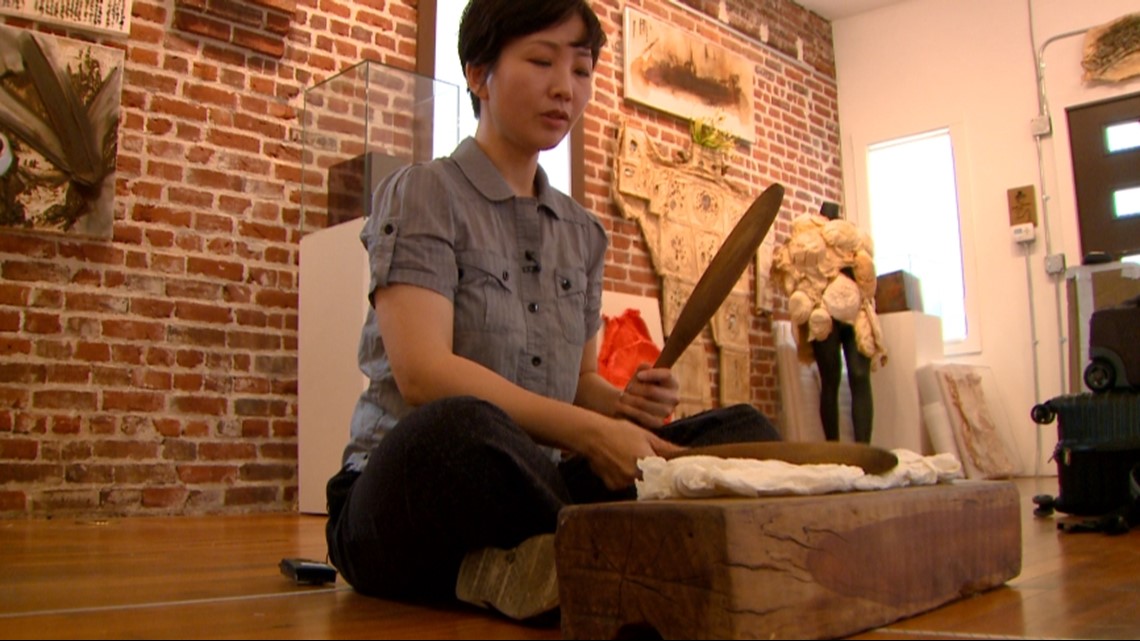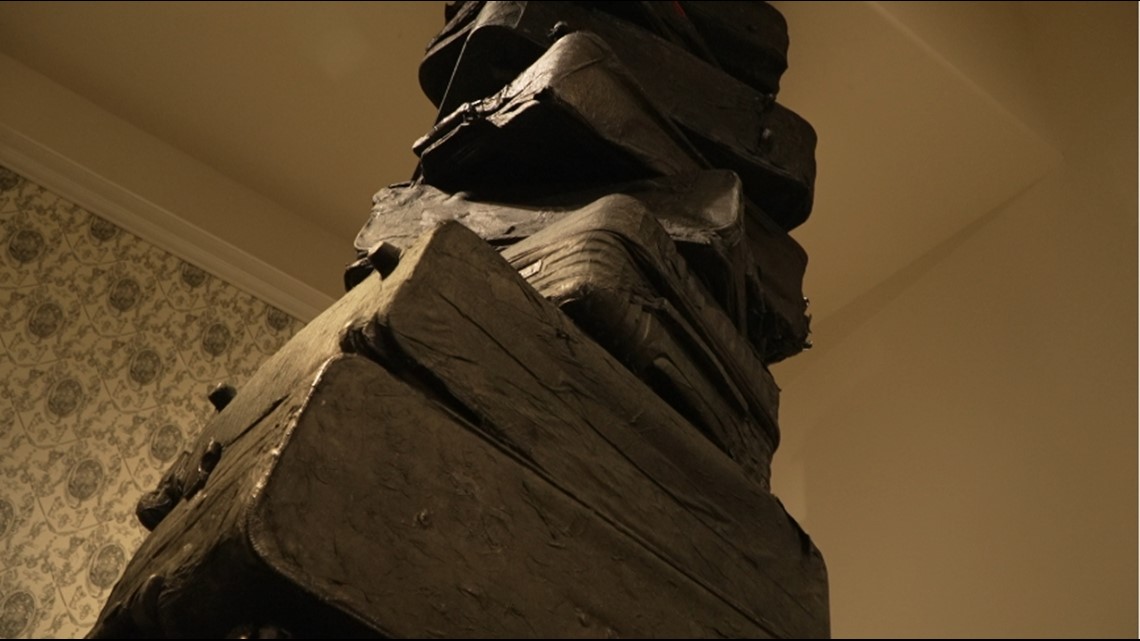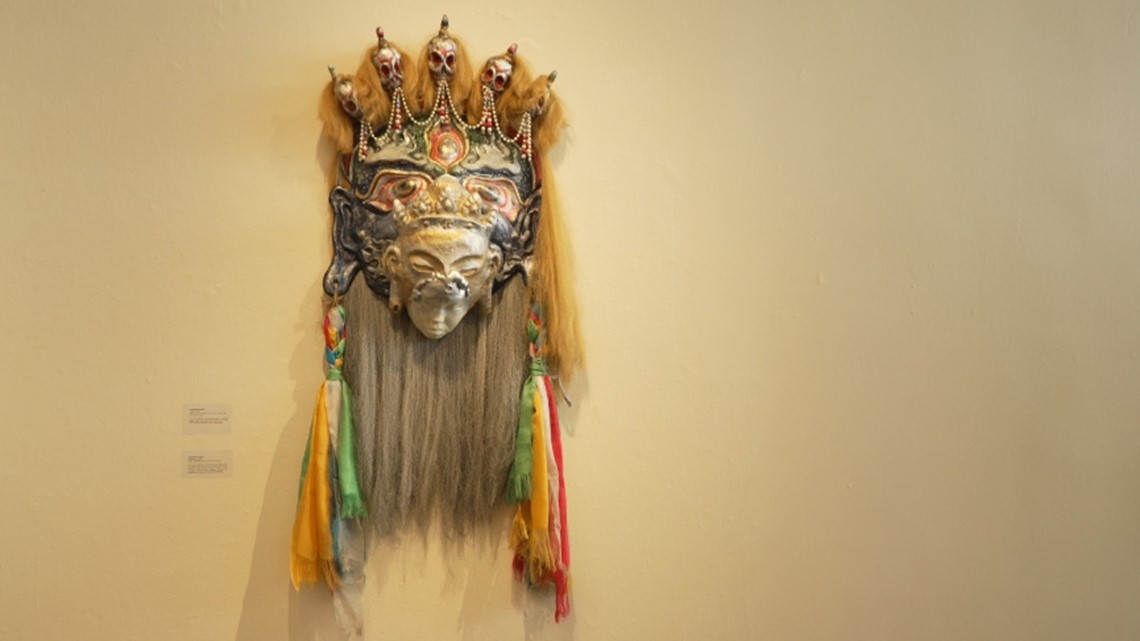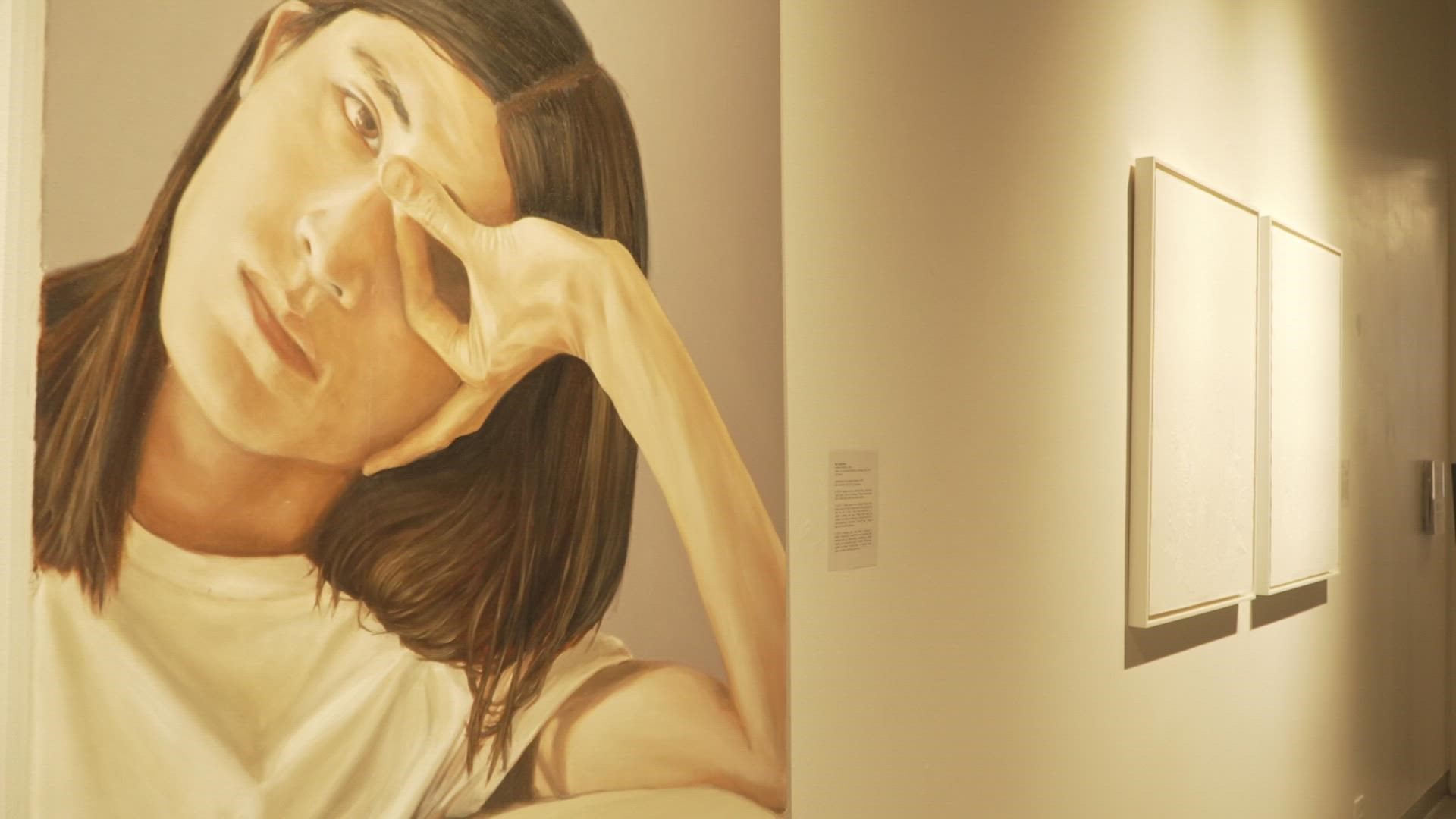BOULDER, Colo. — A long process of soaking, kneading, pounding and felting will transform delicate sheets of paper into a strong skin that can be sculpted onto an object.
"This is just two layers of Hanji, mulberry fiber paper," said Sammy Lee, a Denver-based artist. "It's kind of like a ghost project, you're giving a shape to a memory."
It's Lee's memories, her unique identity, that will turn this paper skin into a meaningful work of art.
"We believe that art creates safe place for discussion," she said.
The laborious process of creating her art reflects the struggle and triumphs of Asian-Americans and their families.
"You really want people to be who they are instead of limiting them and boxing them," said Lee, who's also co-curator of an art exhibit featured in Boulder. "The exhibition is about like Asian-Americans, our struggle, and also to show the hope and how we can thrive despite what we go through."


The exhibit is called "inVISIBLE | hyperVISIBLE." It features Asian-American artists from Colorado and other states.
"Usually during a good time, we are invisible," said Lee. "But, post 9/11 or just in the past couple years through the pandemic it becomes hypervisible."
She said stereotypes forced upon Asian-Americans like "model minority," "honorary whites" or racist terms related to COVID are rooted in white supremacy and meant to prevent Asians from standing in solidarity with other people of color.
"The stereotypes are really, in a sense dangerous, because we're limiting people," said Lee.
One of her pieces featured in the exhibit tells her own story.
"I had to consolidate all of my 16 years of life in Korea into two check-ins and carry-on," she said.
The piece is inspired by the suitcases she and other immigrants bravely and meticulously packed before coming to the states.
"This is what they brought knowing that they'll probably never be able to go back," she said. "They're all black suitcases, kind of like the identity you're given at the arrival at the airport in the U.S. You're just an anonymous black bag."
At the Dairy Arts Center, Yeong Cheng is seeing the exhibit and Lee's suitcases for the first time.
"Looks like every other Samsonite bag and like make sure you don't let the other stuff hang out, like you don't want them to see it. Don't let them see your Asian-ness," said Yeong. "It's so meaningful to see this."


For Yeong, this exhibit is different than other Asian art museums, often curated by non-Asians.
"If you're a white person checking out this exhibit, if this doesn't resonate with you, you need to think about why," they said. "Here, I can feel it, I resonate with it, I relate to it, because this was a collection by Asian immigrants, and of Asian-Americans who are speaking to me from my own experience or from related experiences."
Yeong sees history and family looking at the suitcases.
"The way that it piles up, like all of that immigrant trauma piles up and impacts you intergenerationally within your own relationships in your own family," they said.


Another portrait shows three generations of an immigrant family, losing their culture and their roots.
"The skulls are really almost painful, in a way to watch," said Yeong. "We lose our culture because we have to sacrifice that in order to assimilate, in order to blend in, in order to survive."


Yeong said this exhibit empowers them to explore their identity with the community.
"Come check it out," they said. "It's awesome and take your time."
Lee said she feels missional co-curating this exhibit, something she needed to do.
"I hope to empower our own community and by telling our own narrative and also to celebrate with other communities of who we are in case they don't know who we are," she said. "We need more mirrors to reflect ourself."
You can go see the "inVISIBLE | hyperVISIBLE" exhibit at the Dairy Arts Center in Boulder through Saturday, July 16.
SUGGESTED VIDEOS: Feature stories

